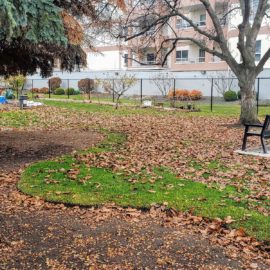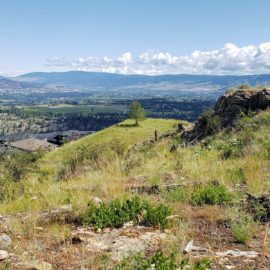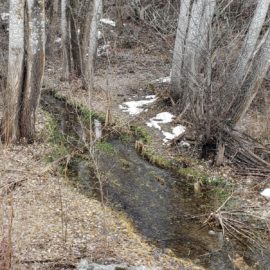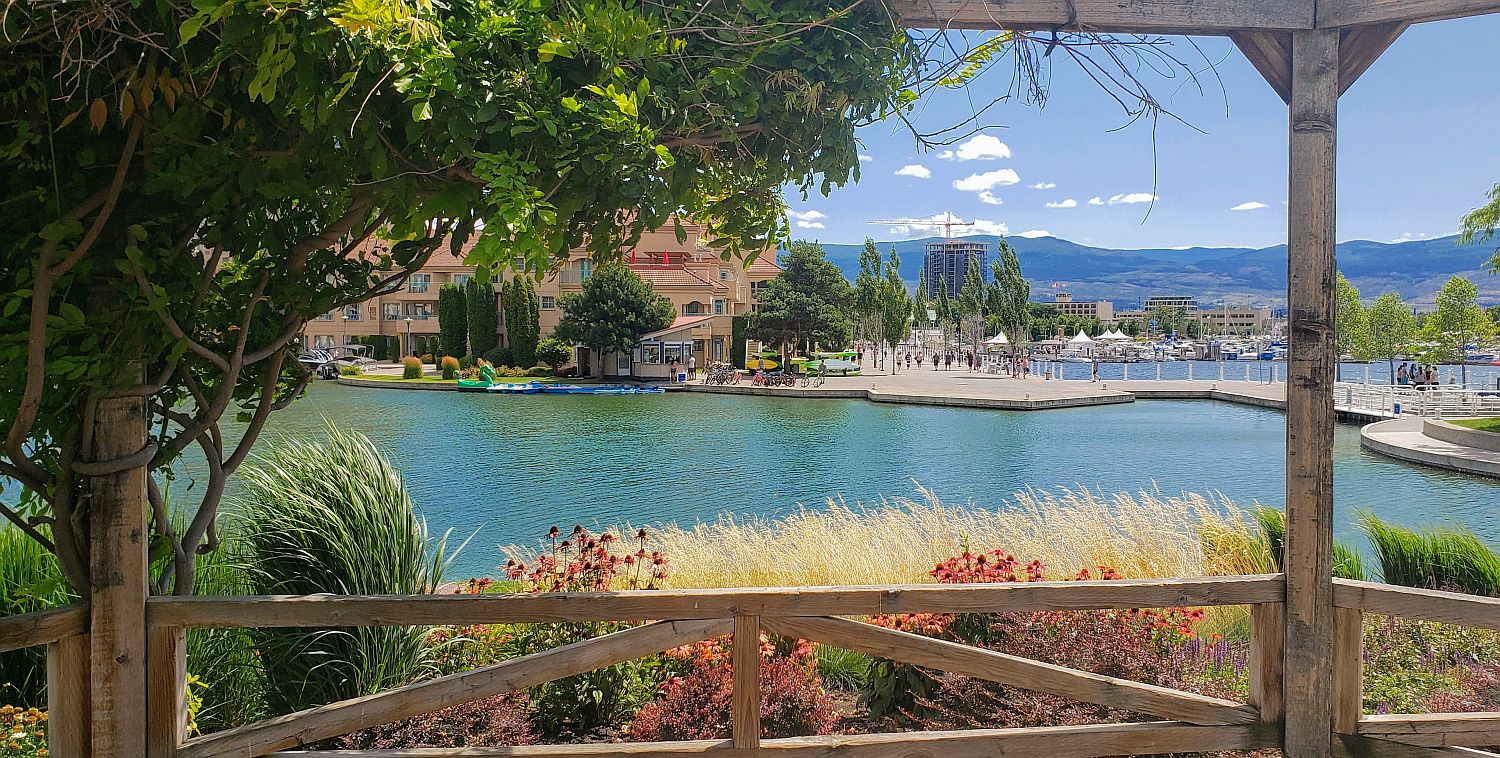
Saturday I went on a second adventure as part of my Kelowna Parks Challenge and saw five more parks. This time, I explored parks in the northern part of downtown, travelling as far north as Brandt’s Creek. The parks I saw were the Water Street Boat Launch, Waterfront Park, Rotary Marsh Park, Sunset Drive Park, and Recreation Avenue Park. Read on for my descriptions and impressions.
Parks
Library Plaza Parkade

Once again, I started my walk at the Kelowna Public Library. Not just because I love it, but because it is a convenient landmark. This time, however, I wanted to highlight the public art piece that is decorating the Library Plaza Parkade, across the lane from the library. I think public art is a great way to beautify the landscape, but also to enhance even natural spaces that don’t need beautification. In this case, the wall-sized piece depicts the topography of the Okanagan Valley. Can you see it?
Water Street Boat Launch
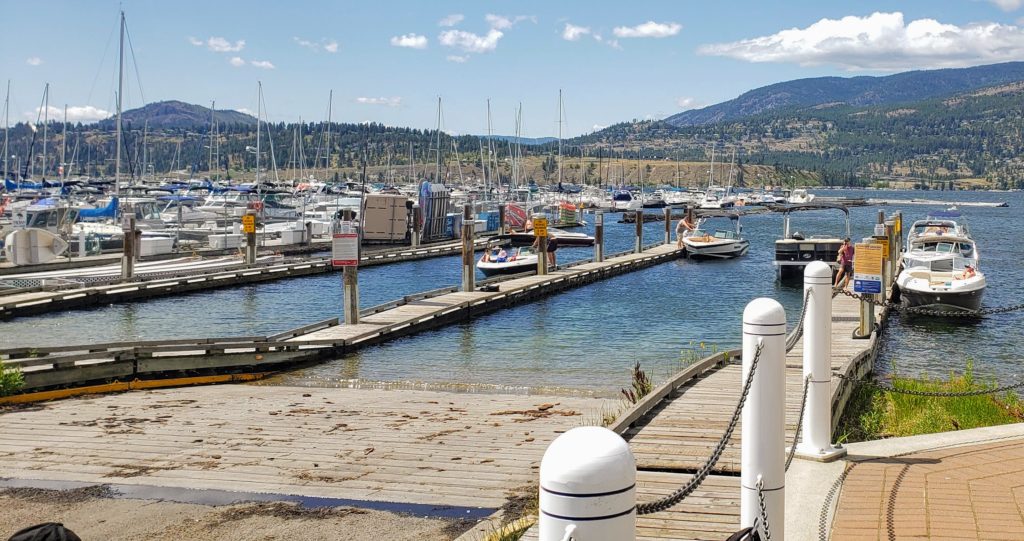
According to the rules of the challenge, public boat launches are on the list, so this was my first official stop. There weren’t any trails to walk or even plantings to view, but it is very nice of the city to provide a public facility like this in the heart of Downtown. The location is perfect, of course: right next to the Kelowna Yacht Club. The yacht club building might be new, but they have had a clubhouse on that spot for many decades.
Dog rules: Dogs are not allowed in this park.
Waterfront Park
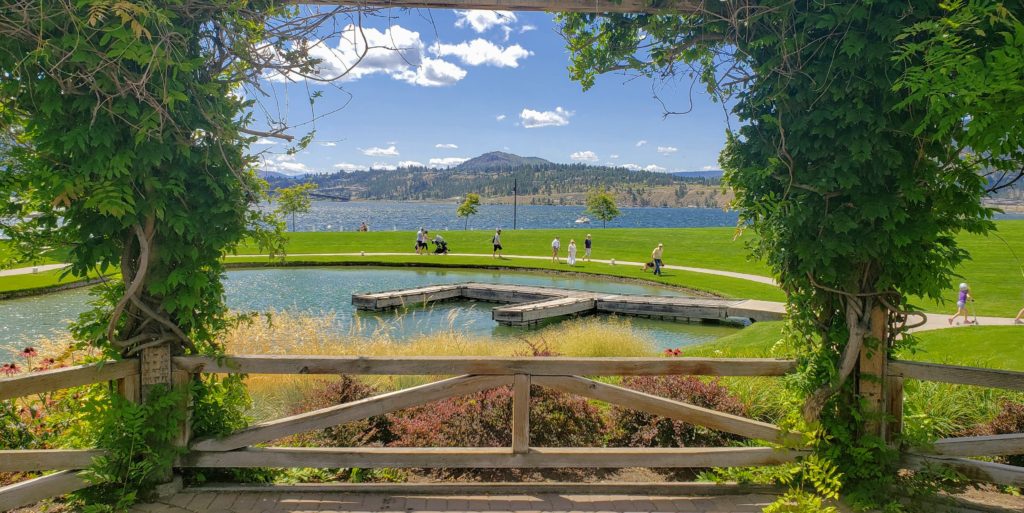
This was the biggest park I visited on this adventure and one of the most varied. Every part of the park had something different to offer, and the winding paths meant that each part was able to remain distinct. They all had their own character and each one was beautiful.
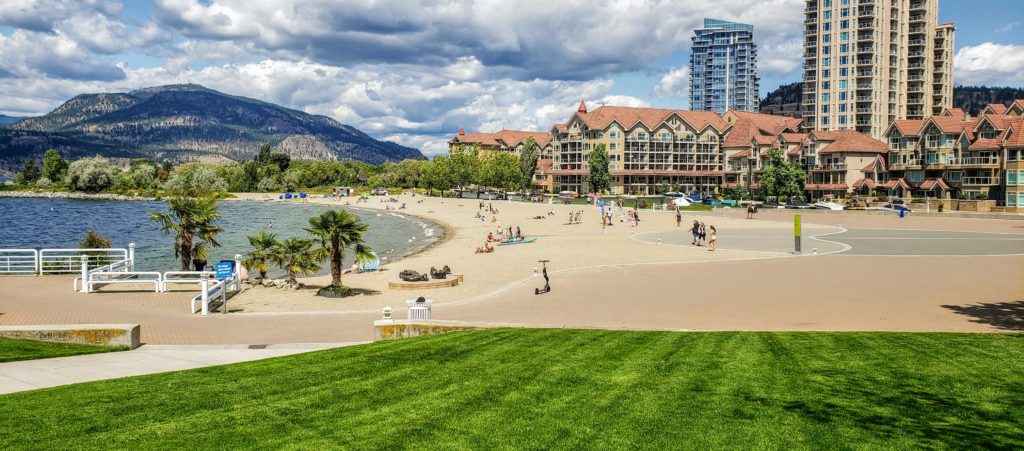
The Dolphins statue, the Island Stage, and a lovely forested hillock are all part of this park, but one of the best parts was the beach at Tugboat Bay. I rate this beach higher than Hot Sands Beach, which I visited last time. The swimming area is naturally more enclosed and the views are much more of parkland than highway infrastructure. Moreover, I was there on a summer Saturday and it was less busy than Hot Sands Beach was on a summer Monday.
Washrooms and Drinking Fountains: There are washrooms and a drinking fountain at the beach at Tugboat Bay. The washrooms face the beach, but the drinking fountain is around the north side of the building.
Rotary Marsh Park

This park contains a wonderfully restored wetland, providing native plants and animals with a place to thrive along the lakeshore, an area they used to have all to themselves but where they are now severely under-represented. On my trip, I saw adult and young osprey in the nest on top of their pole, many songbirds in the abundant willows, and even a deer calmly munching the greenery, safe on the other side of the creek from the human trail.
This park contains a nice balance of trails for humans to appreciate the natural areas and inaccessible areas for plants and animals to go about their business undisturbed.
Washrooms and Drinking Fountains: This park doesn’t have any washrooms, but there is a drinking fountain by the Sunset Drive entrance. It is about two metres from the street, on the south side of the path.
Dog rules: Because it is a sensitive natural area, dogs are not allowed in this park.
Sunset Drive Park
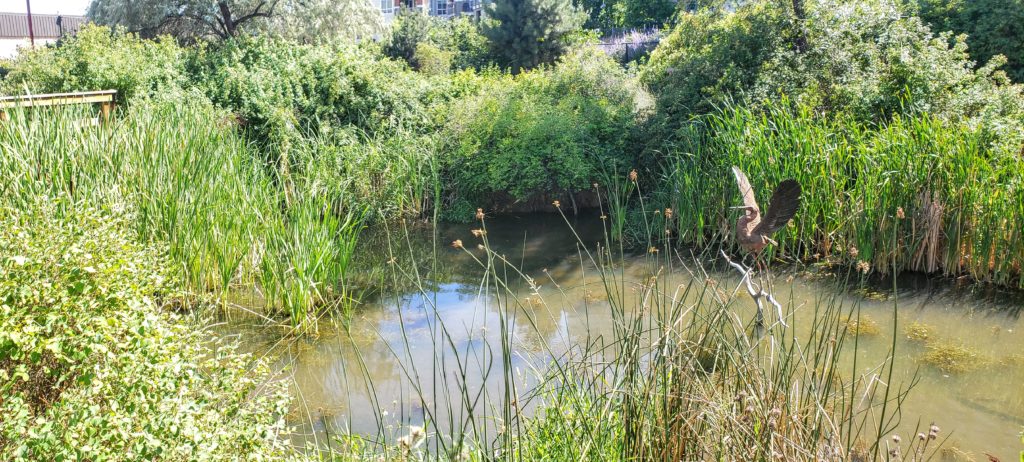
This park consists of a trail along a naturalized section of Brandt’s Creek. In effect, it feels like a natural continuation of the trail out of Rotary Marsh Park, which is great. Green corridors are essential for the flow of plant and animal genes and populations through the urban environment, so it is always nice to see parks connecting so well.
Here Brandt’s Creek looks like more of a slough, but that is a valuable ecosystem too. I don’t know if there are any salmon in it, but I note the city wants a ten-metre setback from the top of the bank for the Sunset Drive to Recreation Avenue Park Linear Park. Right now it looks like the park is about twenty metres wide, which is ten metres on either side of the centre line of the creek, as opposed to ten metres from the top of the bank. Either way, the undeveloped properties on the north side of the park definitely have large strips of land within the thirty-metre riparian assessment area, so I look forward to seeing how the designs of their upcoming developments deal with that.
Recreation Avenue Park
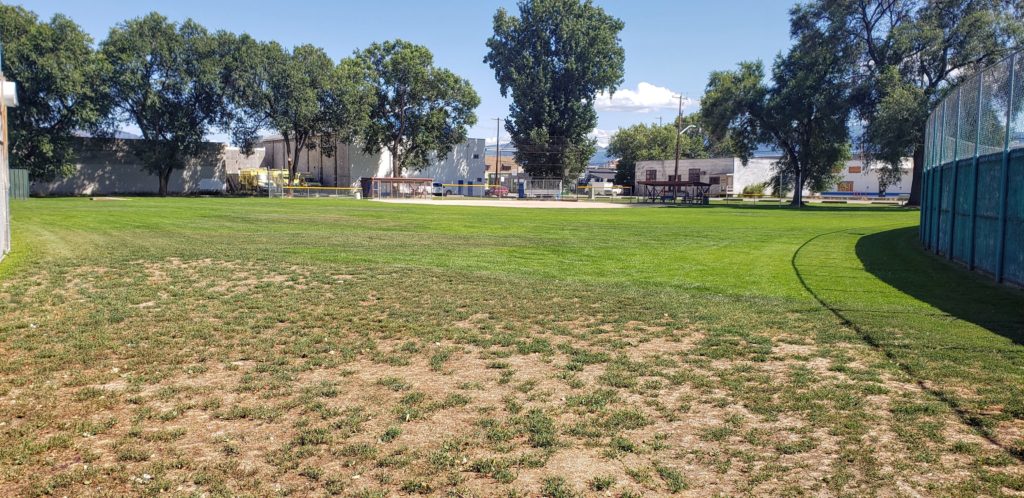
A lot of parks in Kelowna were named after the street they are on, but in this case, I’m not sure the street wasn’t named after the park. Here you will find four baseball diamonds of varying size and the Kelowna Curling Club. That’s it. There are no trails or gardens. Wandering through this park I felt like it was designed in the 1940s or earlier. I’m sure it is a great place to play baseball, but I didn’t see a single other soul while I was there. Once upon a time, this was probably the only park in this neighbourhood. All I needed was a slushy, some “penny” candy, and a couple of comic books and I would have felt like I’d gone through a time machine.
Dog rules: Because all of its area is taken up by sports fields, dogs are not allowed in this park.
Reflections
Whereas last time I explored beautiful waterfront spaces that used to be a soggy sawmill, the lakeshore parks I visited this trip were formerly muddy trainyards. Now that the neighbourhood north of downtown isn’t a fruit-packing district anymore, condo towers and craft brewpubs are sprouting up all over the place. Even the old train station has become a pub. Not that I’m complaining. Industrial land is valuable, but it doesn’t need to be so close to downtown now that no one has needed to ship fruit by ferry in sixty years.
Also, how much more beautiful is the mouth of Brandt’s Creek now than when it was a neglected ditch through a muddy trainyard? As I said, I know industry has its place, but I really do love a good habitat restoration. I always love to visit a park repeatedly after any redevelopment, to watch how the new features get used or neglected or to watch how the new plantings get established or die. Never do I find that process more fascinating than when it comes to a habitat restoration. On a less selfish note, creeks and wetlands are really too precious to casually destroy with urban development. Trainyards and other such places ought to be relegated to spaces where they can help the economy without damaging the more sensitive of the ecosystems we all depend on to live.
Conclusion
Overall, this adventure was a trip of two halves. The first half, from the library to the end of Sunset Drive Park, was a satisfying chain of beautiful experiences. From the manicured lawns of Waterfront Park to the rustic slough of Sunset Drive Park hosting its horde of songbirds, this half of the trip was a pleasure that I would recommend to anyone, tourist or local.
The second half of the trip, from Sunset Drive Park to Recreation Avenue Park and then down St Paul and Doyle to the library again, presented a very different face of the city. Here I saw industrial blocks from the mid-twentieth century with buildings that haven’t been recently polished for tourist consumption. On these sites, consideration of the pedestrian experience hadn’t been given priority in the development of the properties. For example, the sidewalks weren’t always paved and with the exception of the odd willow or walnut tree, opportunities to walk in the shade weren’t frequent.
Nevertheless, I recommend this walk to anyone that wants to see the front and back sides of this neighbourhood. Of course, if you just want the pretty parts, you could walk to the end of Sunset Drive Park and then turn around and go back the way you came. It’s always interesting how the same route can look different when you’re facing the other way.
Anyway, that’s all for this log. Let me know about your experiences with these parks if you like. How long have you been visiting them? What did they use to be like? I would love to know.

